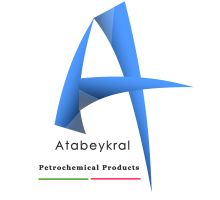Ароматический углеводород или арен (или иногда арил углеводородов) является углеводородом с чередованием двойных и единичных связей между атомами углерода, образующих кольца. Термин «ароматический» был назначен до физический механизм determiningaromaticity был обнаружен; Термин был введен как таковой просто потому, что многие из соединений имеют сладкий или приятный запах. Конфигурация из шести атомов углерода в ароматических соединений известен как бензольное кольцо, после простейших углеводородов можно, например, бензол. Ароматические углеводороды могут быть моноциклической (MAH) или полициклические (ПАУ).
Некоторые не-бензольных соединений на основе называемые гетероарены, которые следуют правилу Хюккеля (для моноциклических колец: когда число его π-электронов равна 4n + 2), называют также ароматические соединения. В этих соединений, по крайней мере, один атом углерода замещен одним из гетероатомов азота, кислорода или серы. Примеры не бензола соединений с ароматическими свойствами являются фуран, гетероциклическое соединение с пятичленного кольца, который включает один атом кислорода, и пиридин, гетероциклическое соединение с шестичленным кольцом, содержащим один атом азота.
Product |
Product Description |
MSDS |
|
Benzene is an organic chemical compound with the chemical formula C6H6. Its molecule is composed of 6 carbon atoms joined in a ring, with 1 hydrogen atom attached to each carbon atom. Because its molecules contain only carbon and hydrogen atoms, benzene is classed as a hydrocarbon. |
|
|
O-Xylene (ortho-xylene) is an aromatic hydrocarbon, based on benzene with two methyl substituents bonded to adjacent carbon atoms in the aromatic ring (the ortho configuration).
It is a constitutional isomer of m-xylene and p-xylene.
O-Xylene is largely used in the production of phthalic anhydride, and is generally extracted by distillation from a mixed xylene stream in a plant primarily designed for p-xylene production.
|
|
|
P-Xylene is an aromatic hydrocarbon based on benzene with two methyl substituents with the chemical formula C8H10 or C6H4 (CH3)2. The “p” stands for para, identifying the location of the methyl groups as across from one another. It is an isomer of xylene. Other isomers include o-xylene and m-xylene. The boiling point of p-xylene is 138.35 °C (281 °F) and the melting point is 13.2 °C (56 °F).[2] p-Xylene is used on a large scale for the manufacture of terephthalic acid for polyester. Its polymer is known as parylene.
|
|
|
M-Xylene (or meta-xylene) is an aromatic hydrocarbon, based on benzene with two methyl substituents. It is an isomer of o-xylene and p-xylene. The m stands for Meta, meaning the two methyl substituents are at locates 1 and 3 on the aromatic ring. M-Xylene is commonly produced in BTX processes, and separated as needed from the other aromatic hydrocarbons.The major chemical use of meta-xylene is in the manufacture of isophthalic acid, which is used as a copolymerizing monomer to alter the properties of polyethylene terephthalate (PET), making PET more suitable for the manufacture of soft drinks bottles.
|
|
|
Toluene formerly known as toluol is a colorless, water-insoluble liquid with the smell associated with paint thinners. It is a mono-substituted benzene derivative, consisting of a CH3 group attached to a phenyl group. As such, its IUPAC systematic name is methylbenzene. It is an aromatic hydrocarbon.
|
|















